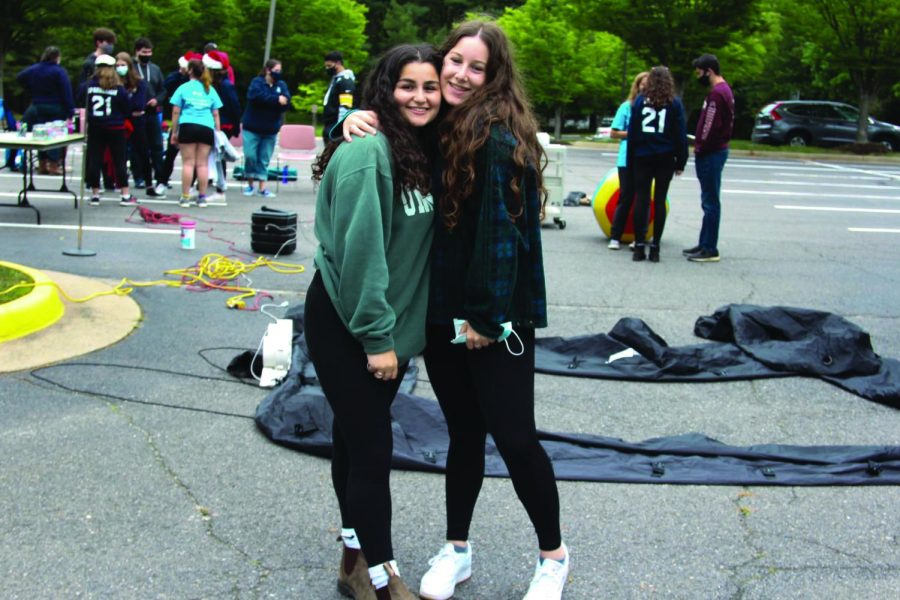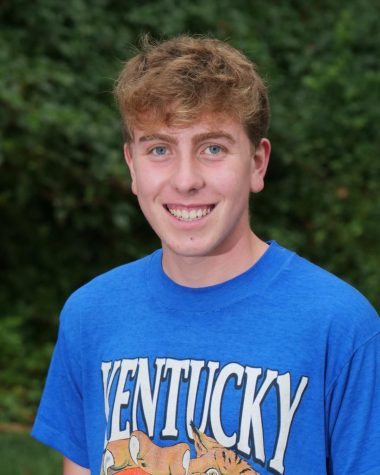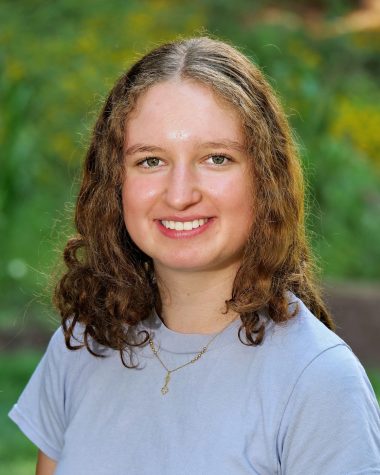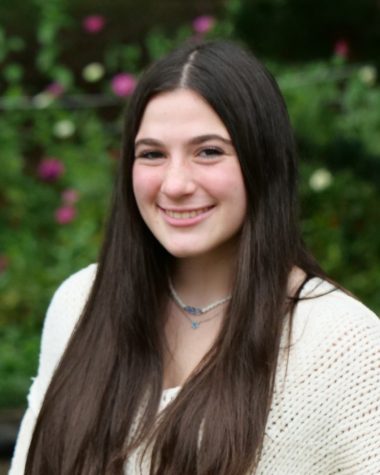Building a better youth group
Benefits and shortcomings of Jewish teen organizations
December 16, 2021
After hours, many CESJDS students are a part of and lead another community: Jewish youth groups. As with any organization, there are several issues these groups are trying to address such as safe relationships and LGBTQ+ acceptance. Yet youth groups have also contributed greatly to people’s lives, helping students connect with their Jewish identity and peers.
Community and Leadership
Junior Tamir Krasna was walking around the hallway with a friend during lunch, eager to widen his social circle after joining JDS in ninth grade, when his friend urged him to go to lunch with a rabbi and free pizza. Seeing nothing to lose, Krasna went to an NCSY lunch meeting. He discovered a Jewish community that not only helped him meet new people, but also gave him a new sense of purpose.
“It just helped me find something to do with [my] time that I’m not feeling like I’m wasting it,” Krasna said. “Whether it is just going and talking and hanging out with people and having these conversations and whether it’s learning different topics in Judaism.”
Krasna is a member of the Potomac chapter board of a primarily Orthodox Jewish youth group, NCSY, an organization that aims to connect Jewish teens and bring them closer to Torah and tradition.
Junior Devorah Freeman is also on the board of a Jewish youth group, United Synagogue Youth (USY), a Conservative group.
“It’s really helped my leadership skills and my planning skills because I have been able to plan activities, and I’ve had to lead activities with kids and middle schoolers,” Freeman said.
There are other Jewish youth groups, but one of the largest groups in terms of JDS students is BBYO, a pluralistic youth group. Founded in 1944 on the concept of “experiential democracy,” BBYO is teen-led and organized, offering leadership training and an “International Leadership Network” which allows members to advocate for topics that are important to them, according to BBYO’s Vice President of Marketing and Communications Debbie Shemony.
Joining BBYO, the pluralistic youth group, helped former DC Council President Ruby Mendelson (‘21) gain public speaking, leadership and writing skills and gave her a Jewish network.
“I really feel like I’m the person I am today because [of] BBYO… I honestly think it’s one of the best ways you can learn about yourself as a leader,” Mendelson said.
Shemony said that Jewish youth groups provide a community for teens with diverse interests to come together. Similarly, Mendelson found that BBYO gave her a strong Jewish network beyond her time in BBYO.
Likewise, being a part of a Jewish youth group helped Krasna socially.
“Especially in the community I live in, I didn’t know many people, so NCSY really helped me reach and meet people,” Krasna said. “Some of my friends in this area I would never have met if not for NCSY.”
Krasna credits NCSY for helping him strengthen his connection to the Jewish community and helping people become closer to Orthodoxy.
But while there are many social benefits, some students have had negative experiences in Jewish youth groups.
Bullying and Hookup Culture
Senior Beck Bender and their chapter, N’shama BBG, were enjoying one of the many annual BBYO conventions when an online messaging board turned their experience sour.
“I’ve been legitimately hate crimed on these BBYO message boards called Jodel during conventions,” Bender said. They recall being verbally attacked with homophobic slurs and racial stereotypes.
Jodel, a messaging board app that is used at BBYO conventions, has specifically come under scrutiny because of the amount of cyberbullying it propagates. It allows students to send messages anonymously to the entire convention about people they may not even know, which creates a platform to start rumors and create an environment filled with harmful hate speech, which Mendelson has witnessed firsthand.
“A lot of people have left their chapters because they’ve been bullied,” Mendelson said. “I don’t really know how that could be avoided because it takes a bit for people to change and it cannot just happen overnight.”
One person who left BBYO because of its toxic environment was junior Molly Isen. She feels the competitive nature of members has overrun the election and leadership systems, with many putting too much pressure and emphasis on getting large roles instead of focusing on the excitement of programs and friendships.
“It was always about social hierarchy, you know, who was better than who, what chapter was more popular than the others, than focusing on the core values of Judaism and community,” Isen said. “When I told people what chapter I was in, they would automatically make assumptions about me. They would make fun of me because I was ‘weird’ and [say] that I shouldn’t be in that chapter because only ‘weird’ girls were in it.”
Freeman believes that USY has similar issues to BBYO with regard to bullying, with most of the cases relating to exclusiveness at big events.
“I think exclusion is definitely an issue because of the little amount of people that are in each grade attending events,” Freeman said. “I think people try their hardest to be inclusive, but sometimes it can be hard. There is a bullying hotline for people to call if they are experiencing these things, and in addition, USY has done trainings and workshops dealing with these specific issues.”
Another issue that is often brought up in regards to BBYO is the hookup environment, where people feel pressured to make out with others at conventions and dances. Isen believes people have this notion in their heads that it’s “cool” to hook up, and they will only be accepted by their BBYO friends if they partake in this practice.
“Just the way I saw people treat themselves because they felt like they had to hook up should be frowned upon. These people felt that if they did otherwise, they wouldn’t be accepted in BBYO by their friends,” Isen said.
At these dances, there are often hookup “walls” in which an entire section of the public dancing room is dedicated for people to hook up against. While people are partaking in this, many others in the room are watching and some even record videos on their phones to post on social media.
“It’s just gross when it’s in public, but I honestly think you can’t really avoid hookup culture. They’re teenagers. What can you do?” Mendelson said. “You can’t really stop the wall from happening. For every pair of people that the convention staff pulls apart, there is another couple coming up right behind them.”
While this issue may be difficult to remedy, BBYO has been taking steps to address the toxic element of hookup culture by educating members about romantic relationships and consent. At the DC Council Regional Convention in November, posters were put up around the hotel reminding members about the importance of consent and how it can be implemented.
“We’ve taken this as a very serious initiative for us in, ‘How can we improve these spaces? How can we make them safer for everyone? How can we improve reporting so that if something happens that is not consensual, that is addressed?’” BBYO Director of Adolescent Wellness Drew Fidler said.
Fiddler believes that the organization is addressing the issue through educational programming, making boundaries clear to members so that they are able to understand what’s appropriate in larger environments such as conventions and dances.
“We’re improving education for our staff, so that they’re appropriately responding [when these issues arise],” Fiddler said. “So recognizing that we are coming into teens’ lives, where they may be interested in developing relationships with one another, but stressing that that is not the purpose of what we are trying to do. We want to create a safe space where that’s available, but not the priority.”
Hookup culture seems to be less of an issue for USY, according to Freeman.
“It’s so much less common for [hookups] to happen at USY because people who do USY do it for the friendships, enjoyment of being together and for the Jewish aspects, not for the hookups,” Freeman said.
Gender Identity and Heteronormativity
For Bender, another major aspect of BBYO that kept them from truly having a meaningful experience was its use of gendered language and enforcement of heteronormative ideas.
“Heteronormativity” refers to the promoting of heterosexuality as the “normal” sexual orientation, or cisgendered people as the “preferred” gender identity.
BBYO chapters are individually classified as AZA (Aleph Zadik Aleph), BBG (B’nai B’rith Girls) or BBYO chapters. Male identifying teens generally gravitate towards AZA chapters, female identifying to BBG chapters and any and all gender identities towards co-ed BBYO chapters.
“I think that there’s nothing wrong with the BBG and AZA structure,” Bender said. They do, however, believe there is “very gender heavy language” used in the youth group that reinforces strong gender roles. BBYO chapters frequently plan “sisterhood” and “brotherhood” chapters; additionally, members refer to each other as “my sister or brother.”
Many AZA and BBG chapters plan more serious programs that discuss more gender-specific issues, such as sexism, toxic masculinity, period stigma and numerous others. “Cisgendered people like having their safe space for their single gender,” Mendelson said.
While she does acknowledge the issues with the binary structure of BBYO, Mendelson does not think it is as severe as a lot of people make it out to be. She asks that people “give [BBYO] some time” to adapt to changing societal standards.
On the other hand, Bender thinks that BBYO should be doing more to address this.
“Regardless of how much they [BBYO staff] pretend that they are progressive… they don’t really care about not-cis[gendered] identities,” Bender said.
Mendelson and Shemony, however, are confident that BBYO is moving in the right direction towards becoming a more inclusive environment for all teens, regardless of gender identity.
“I think the teens are the ones that are pushing this agenda in a good way so I’ve definitely seen progress,” Shemony said.
In addition to an International Leadership Network taskforce on LGBTQ+ inclusivity, many BBYO regions are passing legislation to use more gender inclusive language. The DC Council of BBGs, which covers Jewish teens in the DC metropolitan area, adopted a legislative motion last year to utilize more gender-neutral language, such as “siblinghood” and “my sibling.”
NCSY also faces some issues with gender inclusivity, said Krasna.
“I do think sometimes [NCSY] will have programming that’s mainly for males and mainly for females,” Krasna said. “I guess they don’t really address anything else.”
Overall, however, Krasna doesn’t see it as too major an issue within NCSY. “Generally, the events try to cater to both genders or all genders equally,” he said.
While issues with Jewish youth groups are prevalent, efforts being made by Jewish teens to make these spaces a more comfortable environment for everyone are equally apparent. Both staff and teens are open and ready to adapt and continue to progress their respective organizations.
“Jewish youth groups provide a platform for teens to advocate for things they believe in that they might not otherwise know where to go to do it or to have a voice to do it,” Shemony said.











